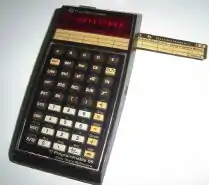59 (number)
59 (fifty-nine) is the natural number following 58 and preceding 60.
| ||||
|---|---|---|---|---|
[[{{#expr: (floor({{{number}}} div {{{factor}}})) * {{{factor}}}+({{{1}}}*{{{factor}}} div 10)}} (number)|{{#switch:{{{1}}}|-1={{#ifexpr:(floor({{{number}}} div 10)) = 0|-1|←}}|10=→|#default={{#expr:(floor({{{number}}} div {{{factor}}})) * {{{factor}}}+({{{1}}}*{{{factor}}} div 10)}}}}]] [[{{#expr: (floor({{{number}}} div {{{factor}}})) * {{{factor}}}+({{{1}}}*{{{factor}}} div 10)}} (number)|{{#switch:{{{1}}}|-1={{#ifexpr:(floor({{{number}}} div 10)) = 0|-1|←}}|10=→|#default={{#expr:(floor({{{number}}} div {{{factor}}})) * {{{factor}}}+({{{1}}}*{{{factor}}} div 10)}}}}]] [[{{#expr: (floor({{{number}}} div {{{factor}}})) * {{{factor}}}+({{{1}}}*{{{factor}}} div 10)}} (number)|{{#switch:{{{1}}}|-1={{#ifexpr:(floor({{{number}}} div 10)) = 0|-1|←}}|10=→|#default={{#expr:(floor({{{number}}} div {{{factor}}})) * {{{factor}}}+({{{1}}}*{{{factor}}} div 10)}}}}]] [[{{#expr: (floor({{{number}}} div {{{factor}}})) * {{{factor}}}+({{{1}}}*{{{factor}}} div 10)}} (number)|{{#switch:{{{1}}}|-1={{#ifexpr:(floor({{{number}}} div 10)) = 0|-1|←}}|10=→|#default={{#expr:(floor({{{number}}} div {{{factor}}})) * {{{factor}}}+({{{1}}}*{{{factor}}} div 10)}}}}]] [[{{#expr: (floor({{{number}}} div {{{factor}}})) * {{{factor}}}+({{{1}}}*{{{factor}}} div 10)}} (number)|{{#switch:{{{1}}}|-1={{#ifexpr:(floor({{{number}}} div 10)) = 0|-1|←}}|10=→|#default={{#expr:(floor({{{number}}} div {{{factor}}})) * {{{factor}}}+({{{1}}}*{{{factor}}} div 10)}}}}]] [[{{#expr: (floor({{{number}}} div {{{factor}}})) * {{{factor}}}+({{{1}}}*{{{factor}}} div 10)}} (number)|{{#switch:{{{1}}}|-1={{#ifexpr:(floor({{{number}}} div 10)) = 0|-1|←}}|10=→|#default={{#expr:(floor({{{number}}} div {{{factor}}})) * {{{factor}}}+({{{1}}}*{{{factor}}} div 10)}}}}]] [[{{#expr: (floor({{{number}}} div {{{factor}}})) * {{{factor}}}+({{{1}}}*{{{factor}}} div 10)}} (number)|{{#switch:{{{1}}}|-1={{#ifexpr:(floor({{{number}}} div 10)) = 0|-1|←}}|10=→|#default={{#expr:(floor({{{number}}} div {{{factor}}})) * {{{factor}}}+({{{1}}}*{{{factor}}} div 10)}}}}]] [[{{#expr: (floor({{{number}}} div {{{factor}}})) * {{{factor}}}+({{{1}}}*{{{factor}}} div 10)}} (number)|{{#switch:{{{1}}}|-1={{#ifexpr:(floor({{{number}}} div 10)) = 0|-1|←}}|10=→|#default={{#expr:(floor({{{number}}} div {{{factor}}})) * {{{factor}}}+({{{1}}}*{{{factor}}} div 10)}}}}]] [[{{#expr: (floor({{{number}}} div {{{factor}}})) * {{{factor}}}+({{{1}}}*{{{factor}}} div 10)}} (number)|{{#switch:{{{1}}}|-1={{#ifexpr:(floor({{{number}}} div 10)) = 0|-1|←}}|10=→|#default={{#expr:(floor({{{number}}} div {{{factor}}})) * {{{factor}}}+({{{1}}}*{{{factor}}} div 10)}}}}]] [[{{#expr: (floor({{{number}}} div {{{factor}}})) * {{{factor}}}+({{{1}}}*{{{factor}}} div 10)}} (number)|{{#switch:{{{1}}}|-1={{#ifexpr:(floor({{{number}}} div 10)) = 0|-1|←}}|10=→|#default={{#expr:(floor({{{number}}} div {{{factor}}})) * {{{factor}}}+({{{1}}}*{{{factor}}} div 10)}}}}]] [[{{#expr: (floor({{{number}}} div {{{factor}}})) * {{{factor}}}+({{{1}}}*{{{factor}}} div 10)}} (number)|{{#switch:{{{1}}}|-1={{#ifexpr:(floor({{{number}}} div 10)) = 0|-1|←}}|10=→|#default={{#expr:(floor({{{number}}} div {{{factor}}})) * {{{factor}}}+({{{1}}}*{{{factor}}} div 10)}}}}]] [[{{#expr: (floor({{{number}}} div {{{factor}}})) * {{{factor}}}+({{{1}}}*{{{factor}}} div 10)}} (number)|{{#switch:{{{1}}}|-1={{#ifexpr:(floor({{{number}}} div 10)) = 0|-1|←}}|10=→|#default={{#expr:(floor({{{number}}} div {{{factor}}})) * {{{factor}}}+({{{1}}}*{{{factor}}} div 10)}}}}]] | ||||
| Cardinal | fifty-nine | |||
| Ordinal | 59th (fifty-ninth) | |||
| Factorization | prime | |||
| Prime | 17th | |||
| Divisors | 1, 59 | |||
| Greek numeral | ΝΘ´ | |||
| Roman numeral | LIX | |||
| Binary | 1110112 | |||
| Ternary | 20123 | |||
| Octal | 738 | |||
| Duodecimal | 4B12 | |||
| Hexadecimal | 3B16 | |||

In mathematics
Fifty-nine is the 17th prime number. The next is sixty-one, with which it comprises a twin prime. 59 is an irregular prime,[1] a safe prime[2] and the 14th supersingular prime.[3] It is an Eisenstein prime with no imaginary part and real part of the form 3n − 1. Since 15! + 1 is divisible by 59 but 59 is not one more than a multiple of 15, 59 is a Pillai prime.[4]
It is also a highly cototient number.[5]
There are 59 stellations of the icosahedron.[6]
59 is one of the factors that divides the smallest composite Euclid number. In this case 59 divides the Euclid number 13# + 1 = 2 × 3 × 5 × 7 × 11 × 13 + 1 = 59 × 509 = 30031.
59 is the highest integer a single symbol may represent in the Sexagesimal system.
In science
- The atomic number of praseodymium, a lanthanide
Astronomy
- Messier object M59, a magnitude 11.5 galaxy in the constellation Virgo
- The New General Catalogue object NGC 59, a magnitude 12.4 spiral galaxy in the constellation Cetus
In music
- Beethoven's Opus 59 consists of the three so-called Razumovsky Quartets
- 59, an album by Puffy AmiYumi
- The 1960s song "The 59th Street Bridge Song (Feelin' Groovy)" was popularized by Simon & Garfunkel and Harpers Bizarre
- The '59 Sound, an album by The Gaslight Anthem; includes the song of the same name
- The album 14:59 by Sugar Ray
- "11:59", a song by Blondie from Parallel Lines
- .59 is a song by djTAKA from beatmania IIDX 2nd Style and Dance Dance Revolution 4thMIX
- '59 is the sixth track on the album Ignition! by Brian Setzer
- 59 is an area code of Andheri, Mumbai. Used by Vivian Divine in various songs with Gully Gang.
In sports
- Satchel Paige became the oldest major league baseball player at age 59
- 59 is the lowest golf score in a single round on the LPGA Tour by Annika Sörenstam, and on the Champions Tour by Kevin Sutherland.
In other fields

Fifty-nine is:
- The number corresponding to the last minute in a given hour, and the last second in a given minute
- The number of beads on a Roman Catholic rosary (Dominican).[7]
- Approximately the number of days in two lunar months
- The Queensboro Bridge in New York City is also known as the 59th Street Bridge
- The number on a button commonly worn by feminist activists in the 1970s; this was based on the claim that a woman earned 59 cents to an equally qualified man's dollar
- Art Project 59's "59 Seconds Video Festival"[8] at 59 Franklin Street, showed 59 videos to 59 different audiences, each 59 seconds long and incorporating the number 59
- In amateur radio, a perfect signal report
- Five Nine, an amateur radio magazine published in Japan
- The number of the French department Nord
- The "59-minute rule" is an informal rule in business, whereby (usually near a holiday) employees may be allowed to leave work early, often to beat heavy holiday traffic (the 59 minutes coming from the rule that leaving one full hour early requires the use of leave, whereas leaving 59 minutes early would not)
See also
References
- "Sloane's A000928 : Irregular primes". The On-Line Encyclopedia of Integer Sequences. OEIS Foundation. Retrieved 2016-05-30.
- "Sloane's A005385 : Safe primes". The On-Line Encyclopedia of Integer Sequences. OEIS Foundation. Retrieved 2016-05-30.
- "Sloane's A002267 : The 15 supersingular primes". The On-Line Encyclopedia of Integer Sequences. OEIS Foundation. Retrieved 2016-05-30.
- "Sloane's A063980 : Pillai primes". The On-Line Encyclopedia of Integer Sequences. OEIS Foundation. Retrieved 2016-05-30.
- "Sloane's A100827 : Highly cototient numbers". The On-Line Encyclopedia of Integer Sequences. OEIS Foundation. Retrieved 2016-05-30.
- H. S. M. Coxeter, P. Du Val, H. T. Flather, and J. F. Petrie. The Fifty-Nine Icosahedra.
- Richard Poe, "Parts of the Rosary", TheChantRosary.com, 2-4-2018
- 59 Seconds Video Festival